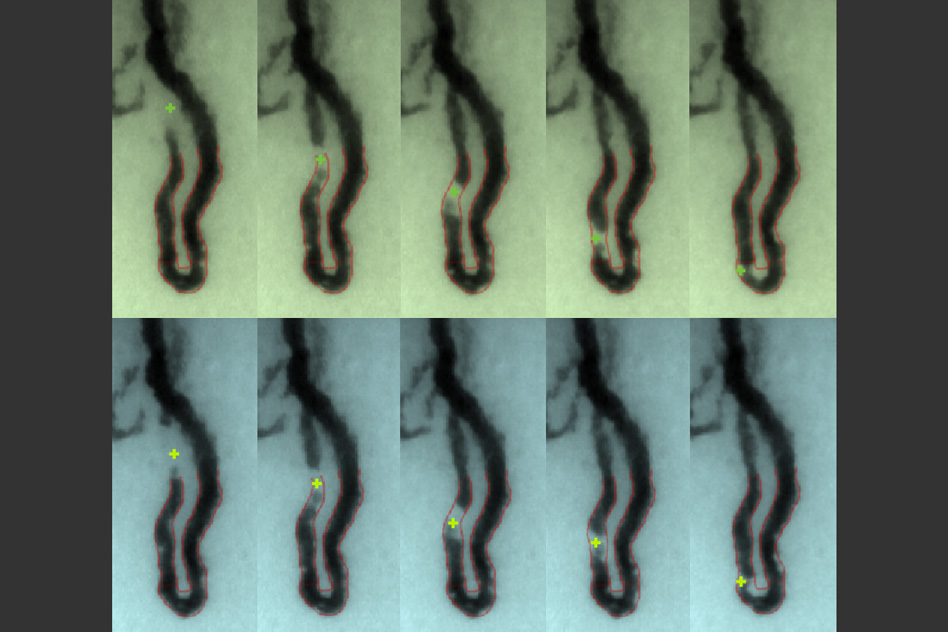
During chemotherapy, a sharp drop in white blood cells leaves patients vulnerable to dangerous infections. In the US, one in six chemo patients is hospitalized with an infection—and about 7 percent of those infections prove fatal. Infected patients also have to miss their next chemotherapy dose, which sets back their cancer treatment.
A team of researchers from MIT and the Technical University of Madrid, led by Research Laboratory of Electronics postdoc Carlos Castro-Gonzalez, has now developed a portable white-blood-cell monitor. The device could be used at home, without taking blood samples, to determine whether prophylactic antibiotics and drugs that promote growth of white blood cells are needed to ward off infections.
The tabletop prototype records video of blood cells flowing through capillaries just below the skin’s surface at the base of the fingernail. These capillaries are so narrow that white blood cells must squeeze through one at a time. That makes it easier for them to be seen by a wide-field microscope that emits blue light, which penetrates about 50 to 150 micrometers below the skin and is reflected back to a video camera.
In tests, three human assistants watched one minute of such video for each of 11 chemotherapy patients. They detected with 95 percent accuracy whether a patient’s white-cell levels were above or below the threshold of danger. The researchers have since developed a computer algorithm using AI and machine vision that can perform the same task automatically.
They’ve also launched Leuko, a startup that’s commercializing the technology.
Keep Reading
Most Popular
Large language models can do jaw-dropping things. But nobody knows exactly why.
And that's a problem. Figuring it out is one of the biggest scientific puzzles of our time and a crucial step towards controlling more powerful future models.
The problem with plug-in hybrids? Their drivers.
Plug-in hybrids are often sold as a transition to EVs, but new data from Europe shows we’re still underestimating the emissions they produce.
Google DeepMind’s new generative model makes Super Mario–like games from scratch
Genie learns how to control games by watching hours and hours of video. It could help train next-gen robots too.
How scientists traced a mysterious covid case back to six toilets
When wastewater surveillance turns into a hunt for a single infected individual, the ethics get tricky.
Stay connected
Get the latest updates from
MIT Technology Review
Discover special offers, top stories, upcoming events, and more.